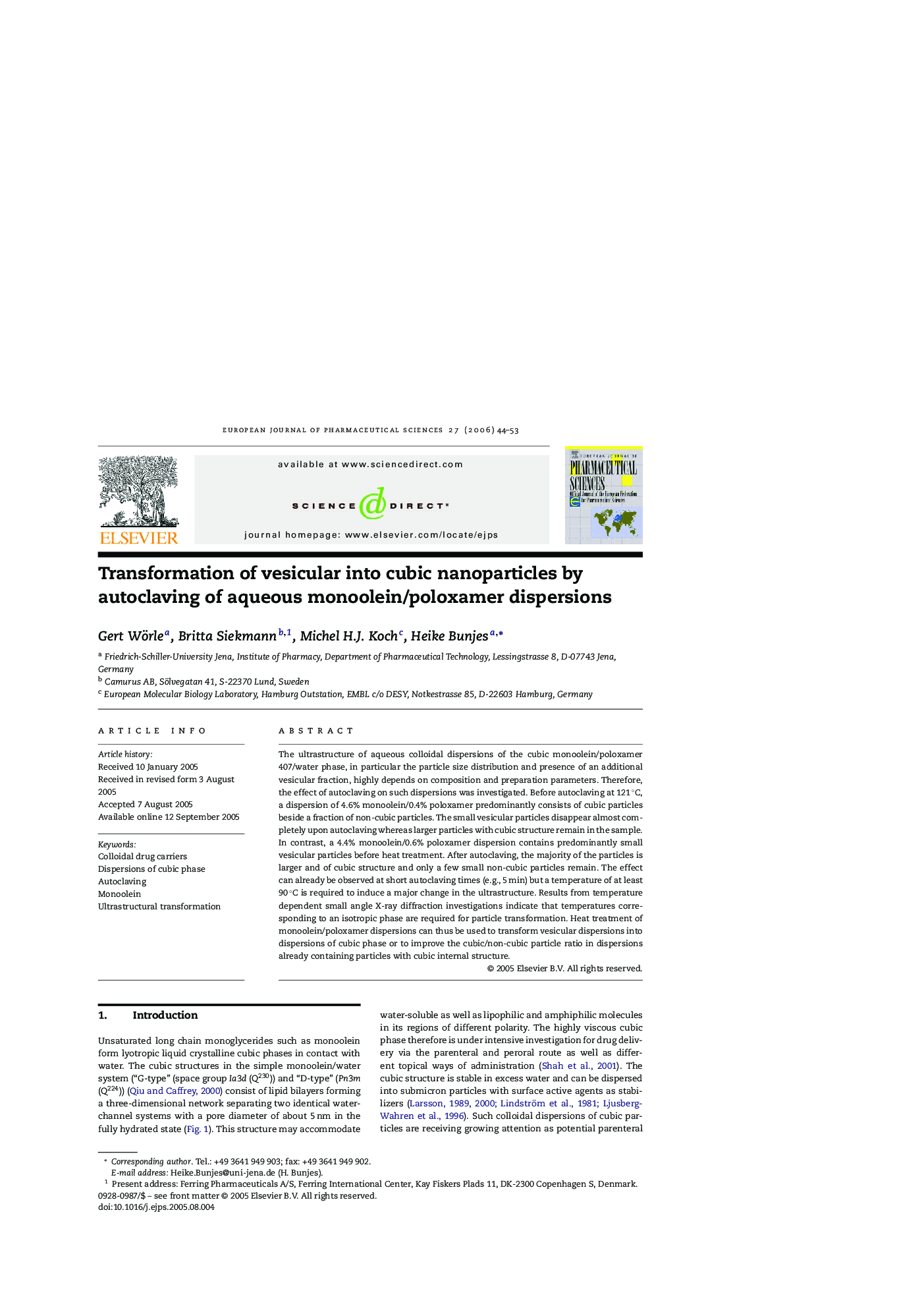| Article ID | Journal | Published Year | Pages | File Type |
|---|---|---|---|---|
| 2482674 | European Journal of Pharmaceutical Sciences | 2006 | 10 Pages |
The ultrastructure of aqueous colloidal dispersions of the cubic monoolein/poloxamer 407/water phase, in particular the particle size distribution and presence of an additional vesicular fraction, highly depends on composition and preparation parameters. Therefore, the effect of autoclaving on such dispersions was investigated. Before autoclaving at 121 °C, a dispersion of 4.6% monoolein/0.4% poloxamer predominantly consists of cubic particles beside a fraction of non-cubic particles. The small vesicular particles disappear almost completely upon autoclaving whereas larger particles with cubic structure remain in the sample. In contrast, a 4.4% monoolein/0.6% poloxamer dispersion contains predominantly small vesicular particles before heat treatment. After autoclaving, the majority of the particles is larger and of cubic structure and only a few small non-cubic particles remain. The effect can already be observed at short autoclaving times (e.g., 5 min) but a temperature of at least 90 °C is required to induce a major change in the ultrastructure. Results from temperature dependent small angle X-ray diffraction investigations indicate that temperatures corresponding to an isotropic phase are required for particle transformation. Heat treatment of monoolein/poloxamer dispersions can thus be used to transform vesicular dispersions into dispersions of cubic phase or to improve the cubic/non-cubic particle ratio in dispersions already containing particles with cubic internal structure.
